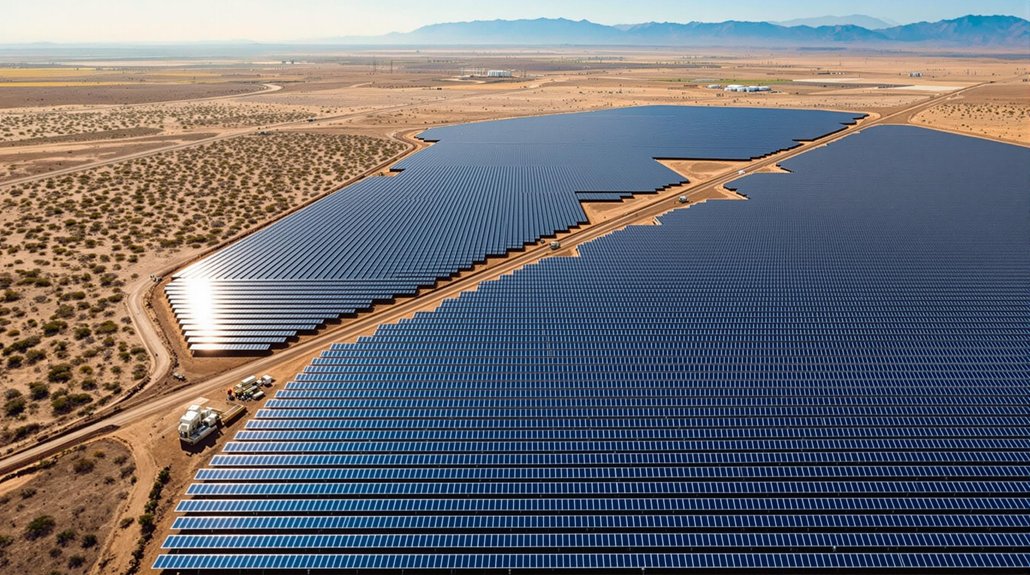Carbon offset tax deductions depend on who buys them and why. Personal carbon offsets typically aren’t tax deductible, but donations to qualified environmental nonprofits may be if itemized. Businesses can often deduct offsets as legitimate business expenses with proper documentation. International tax treatments vary by country. Common mistakes include misclassifying personal purchases and keeping insufficient records. The specific details reveal important distinctions that affect potential tax benefits.

When it comes to carbon offsets, their tax status isn’t always clear. Many people wonder if they can deduct these purchases on their tax returns. The answer depends on several factors, including who’s buying them and why.
Carbon offset tax deductions exist in a gray area, varying based on the purchaser’s identity and purpose.
For most individuals, carbon offsets aren’t tax deductible when purchased for personal use. The IRS doesn’t have specific rules about carbon offsets, but they generally can’t be claimed on personal tax returns. However, if someone donates to a qualified 501(c)(3) nonprofit organization that works on carbon offset projects, that donation might be tax deductible. The donor must itemize deductions and can’t receive benefits in return for their contribution.
Businesses face different rules. Companies may deduct carbon offset purchases as ordinary and necessary business expenses under Section 162 if they relate to business operations. Sometimes they might need to be capitalized under Section 263 if they provide long-term benefits. Proper documentation is vital for any business claiming these deductions. These credits often help businesses remain competitive in markets that increasingly value corporate sustainability practices. Businesses can also file Form 8933 for credits related to carbon oxide capture, utilization, and disposal under Section 45Q of the tax code.
Tax treatment varies internationally. In the UK, offsets are deductible if used wholly for trade purposes. Australia generally allows deductions, though they may be deferred. Canada has a specific Greenhouse Gas Offset Credit System, while EU countries have varying approaches.
Nonprofit carbon offset programs offer another possibility. Contributions to 501(c)(3) organizations may be tax deductible, but they must be true donations without substantial benefits in return. The nonprofit must provide a proper tax receipt, and donations are limited to a percentage of adjusted gross income.
Documentation is essential for any carbon offset purchase. People should keep detailed receipts, project information, and business purpose details if relevant. Acknowledgment letters are required for donations over $250, and records should be kept for at least three years.
Common mistakes include claiming personal carbon offsets as deductions, insufficient documentation, overlooking potential tax credits, and misclassifying offsets as charitable donations when they aren’t. As this area of tax law evolves, more guidance may become available.
Frequently Asked Questions
How Do Carbon Offsets Impact Corporate Sustainability Reporting?
Carbon offsets impact corporate sustainability reporting by requiring detailed disclosure under new regulations like CSRD.
Companies must separate emissions data from offset information, revealing credit details including quantity, type, location, and quality standards.
Firms can’t hide actual emissions behind offsets, and must explain how credits fit into their broader strategy.
This transparency helps investors evaluate a company’s true environmental performance and financial commitments to sustainability.
Can Carbon Offsets Be Carried Forward to Future Tax Years?
Carbon offsets typically can’t be carried forward to future tax years. The IRS generally treats them as expenses in the year they’re purchased, not as capital assets.
However, some exceptions may exist for businesses with large purchases intended for future use or for long-term carbon removal projects. No specific IRS guidance addresses this issue directly.
Companies should maintain detailed records of all carbon offset transactions for proper tax reporting.
Do Different Types of Carbon Offsets Have Varying Tax Implications?
Different types of carbon offsets have distinct tax implications.
Voluntary offsets typically aren’t tax deductible for individuals but may be for businesses as operational expenses.
Compliance credits from government programs often start with zero-dollar basis, with gain recognized upon sale.
Offsets donated to qualified nonprofits can be deductible with proper documentation.
Tax treatment also varies internationally, with countries like Australia, the UK, and Canada each having their own rules.
Are Carbon Offsets Recognized by International Tax Authorities?
Recognition of carbon offsets varies widely among international tax authorities.
There’s no universal standard across countries. Some nations allow certain offsets as business expenses, while others don’t recognize them at all.
The EU accepts offsets from specific programs like the Clean Development Mechanism.
In the US, the IRS doesn’t explicitly recognize carbon offsets as tax-deductible, though they might qualify as business expenses in some cases.
How Often Do Tax Regulations Regarding Carbon Offsets Change?
Tax regulations for carbon offsets change frequently but follow no fixed schedule. Major revisions often coincide with new climate policies, occurring every 3-5 years. Minor adjustments may happen annually.
Recent notable changes include the 2022 IRS guidance on carbon capture tax credits and 2021 Infrastructure Investment and Jobs Act provisions.
Changes are driven by carbon market trends, scientific data, government priorities, international agreements, and taxpayer feedback.









